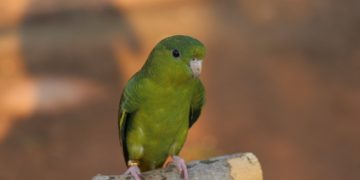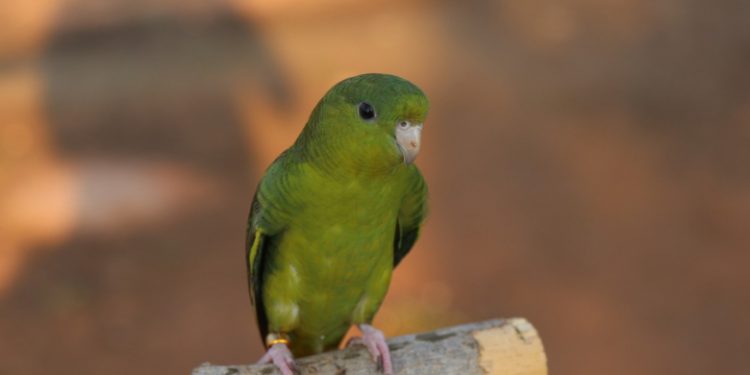The Catherine Parakeet, or Toui Catherine, is a small psittacine with pretty green plumage. This bird is reputed to be easy to tame, in particular because of its gentle temperament.
Geographical area
The geographical origins of the Catherine Parakeet are mainly in Latin America, in countries such as Mexico, Panama, Colombia, Peru and Venezuela.
Breed History
The first description of the Catherine Parakeet was made in 1853 by an American ornithologist named John Cassin.
Physical peculiarities
The Catherine Parakeet is characterized by its small size, as well as by its plumage whose dominant color is green. Stripes are present on the bottom.
In the male, the tail feathers, called rectrices, are entirely black. In the female, this coloration is only found on half of this surface. However, only DNA can determine the sex of the bird with certainty.
There are several mutations concerning Catherine Parakeets bred in captivity: lutino, blue, turquoise, cobalt, olive green, cremino…
Behavior and character
The Catherine Parakeet is known for its gentle and calm temperament, which makes it an easy bird to tame.
In terms of activities, the Catherine Parakeet loves to play, climb and perform acrobatics.
Feed
The diet of the Catherine Parakeet consists of various seeds: saffron, oats, buckwheat, millet, flax… It also feeds on sprouted seeds. His diet should be supplemented with fresh fruits and vegetables: cucumber, carrot, corn, cooked beans, cooked peas, etc.
It is also essential to ensure that the Parakeet Catherine has fresh, clean water, to be renewed daily, or even several times a day.
Reproduction
In the Catherine Parakeet, sexual maturity occurs around the age of 10 months. Nevertheless, it is strongly advised not to let her mate before the age of 18 months.
If, in the wild, the female Catherine Parakeet nests in December, the breeding period in captivity extends almost throughout the year.
There are generally 4 to 7 eggs per clutch. The mother incubates them for 22 days.
Health
In terms of health, the Catherine Parakeet is a rather robust bird, which simply needs to be protected from drafts. She has nothing to fear as long as she receives basic care and proper nutrition.
Way of life
The Catherine Parakeet needs a large cage to place in the living room or living room, rather than in an uncrowded room.
As far as perches are concerned, it is recommended to opt for the so-called therapeutic models, which have a smooth texture on top and rough below. They are to be preferred to plastic ones, as these are likely to irritate the bird’s feet.
The Catherine Parrot requires a weekly bath in lukewarm water and under supervision.












